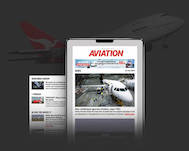Airservices Australia is back to pre-COVID staffing levels but still has work to do, its CEO says.
Speaking at the Australian Financial Review’s Infrastructure Summit in Sydney, Rob Sharp said Australia’s air traffic management provider, which has been actively recruiting over the past few years, is in better shape in terms of workforce than Europe and the United States.
This content is available exclusively to Australian Aviation members.
A monthly membership is only $5.99 or save with our annual plans.
- Australian Aviation quarterly print & digital magazines
- Access to In Focus reports every month on our website
- Unlimited access to all Australian Aviation digital content
- Access to the Australian Aviation app
- Australian Aviation quarterly print & digital magazines
- Access to In Focus reports every month on our website
- Access to our Behind the Lens photo galleries and other exclusive content
- Daily news updates via our email bulletin
- Unlimited access to all Australian Aviation digital content
- Access to the Australian Aviation app
- Australian Aviation quarterly print & digital magazines
- Access to In Focus reports every month on our website
- Access to our Behind the Lens photo galleries and other exclusive content
- Daily news updates via our email bulletin
“We’re getting there. We’re not there yet. We’re open about that. Europe and the US are literally thousands of controllers short,” he said.
“We’re back to pre-COVID levels, but it’s still not where we want it. We’re looking at having standby staff – like the airlines – so if someone calls in sick you have someone to put in the seat. That’s probably the realistic way to get to the resilience we want.
“On-time performance is back to industry levels. Europe is actually trending down. Staffing is a global issue for air traffic controllers – about 80 percent of delays in Europe were from ATC. In America, controllers aren’t being paid because of federal issues, and that’s causing major delays.”
According to Sharp, Airservices has been investing heavily in overhauling its aging infrastructure as air traffic is forecast to grow around 25 to 30 per cent over the next decade, including its major OneSKY-CMATS program, tower refurbishments, and the introduction of digital aerodrome services.
“That’s a massive amount of growth. There’s around $40 billion in airport construction underway or planned over the next 10 years. That’s about a 40 percent increase in capacity. Airlines are ordering aircraft in anticipation of demand and airports are expanding,” he said.
“Airservices is the third leg of the stool. You’ve got the aircraft, you’ve got the airports, but without the infrastructure in the sky – that blue layer – you don’t get the economic benefits that support that growth.
“Like many peers internationally, our infrastructure is at end of life just at the time we’ve got big growth happening. The challenge for us is: how do we deliver that infrastructure? Radar systems, control towers, the software that underpins management and tracking.”
According to Airservices’ latest Australian Aviation Network Overview report for October 2025, “sustained investment in recruitment and training” has seen air traffic service variations drop by 95 per cent compared to October last year.
“Sydney experienced staffing challenges on four days accounting for 0.3% of total delays at the airport, with Airservices impacts ranging from a fully attributable GDP on 15 October to minor ground delays,” said Airservices.
“To close resilience gaps, accelerated cross-training of air traffic controllers for priority locations such as Sydney remains a key focus.
“With Airport Collaborative Decision Making (A-CDM) now operational at three of Australia’s busiest airports, we are seeing improved network predictability and delay reduction.
“Since implementation, Perth’s daily departure delays have fallen by over 85 per cent, Brisbane’s on-time performance improved by nine points, and Sydney saw smoother traffic flows during constrained operations.”
A controversial retirement incentive scheme during the height of the pandemic saw 138 employees leave Airservices, at least 124 of whom were operational ATCs.





